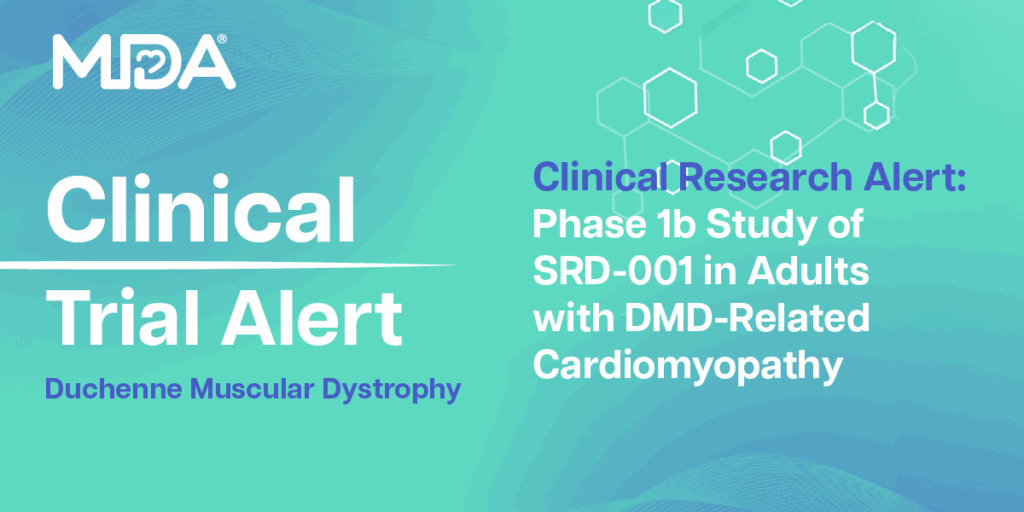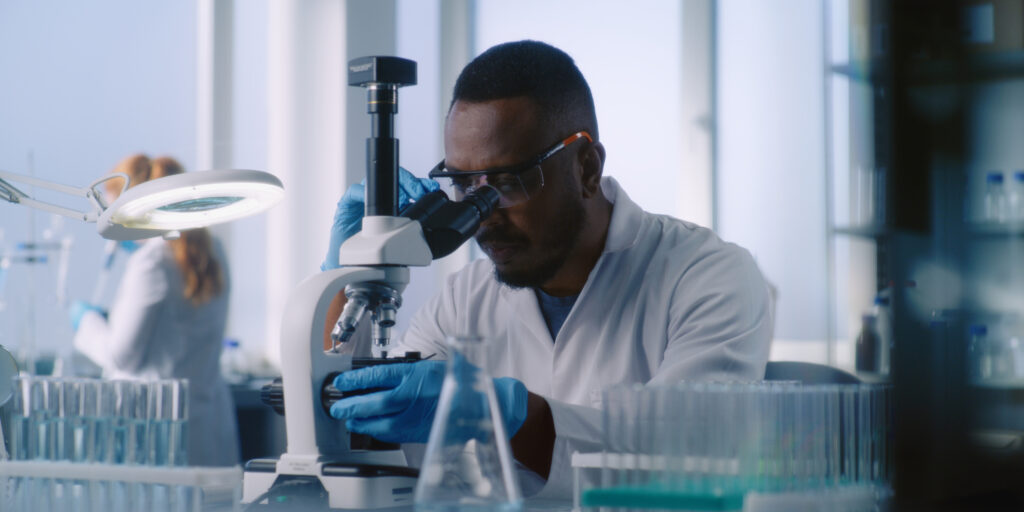![iStock-1442612159 [Converted] Illustration of the neuromuscular junction, where nerves send signals to muscles.](https://mdaquest.org/wp-content/uploads/2025/05/SPOT-Hero-iStock-1442612159-1024x512.jpg)
Understanding Congenital Myasthenic Syndrome: Causes and Treatments
By Justine Savage | Friday, May 23, 2025
Congenital myasthenic syndrome (CMS) is a rare genetic condition that disrupts communication between nerves and muscles, leading to muscle weakness and fatigue that fluctuates over time rather than progressively worsening. Due to its rarity, CMS is often difficult to diagnose and may be overlooked in childhood. Symptoms typically appear within the first three years of life, though some develop later, even in adulthood.

Hanns Lochmüller, MD, PhD, is a neurology professor and biomedical researcher.
To better understand CMS, we spoke with Hanns Lochmüller, MD, PhD, Professor of Neurology at the University of Ottawa and Senior Scientist in the Molecular Biomedicine Program at the Children’s Hospital of Eastern Ontario Research Institute.
What causes CMS?
In CMS, genetic mutations prevent molecules at the neuromuscular junction (where nerves send signals to muscles) from forming or functioning correctly, leading to incomplete signal transmission between nerves and muscles.
CMS is congenital, meaning it is present from birth and caused by mutations in specific genes. It’s a recessive condition, so a person must inherit mutations from each parent.
CMS primarily affects voluntary muscles, including those in the arms and legs, and muscles involved in swallowing or lifting the eyelids. While not everyone experiences symptoms immediately, about 80% of children with CMS show symptoms within the first three years. Unlike muscular dystrophies, which worsen over time, CMS symptoms fluctuate and may improve or worsen at different times.
How many types of CMS are there?
CMS is divided into types based on the genes that cause it, with about 35 known genes linked to the condition. Some are more common, affecting dozens or even hundreds of individuals, while others are extremely rare, reported in only a few families worldwide. These genes are further grouped based on whether they affect the nerve or muscle side of the neuromuscular junction, treatment response, or age of onset.
How is CMS diagnosed?
CMS is often missed in childhood due to its rarity, leading to delayed diagnosis. A clinical examination is the first step, as fluctuating fatigue or weakness suggests a neuromuscular transmission defect.
Antibody testing helps distinguish CMS from autoimmune myasthenia gravis (MG), with negative results suggesting CMS. From there, a neuromuscular specialist or geneticist can order genetic testing to identify mutations through multigene panels or whole-exome/genome sequencing. This is essential for determining treatment and accessing clinical trials.
Doctors may also perform a repetitive nerve stimulation test to assess nerve-to-muscle signaling.
In rare cases, muscle biopsies may be used to rule out other conditions.
What is the current standard of care?
The good news: 70% of CMS patients have access to an effective oral medication. However, genetic diagnosis is essential for selecting the right treatment, as CMS types can respond differently to the same medications. Below are common medications used to treat CMS, though most are prescribed off-label, meaning they are not specifically licensed for CMS treatment:
- Acetylcholinesterase (AChE) inhibitors: Help improve nerve-muscle communication for most CMS patients, but should be avoided in slow-channel CMS, COLQ-related AChE deficiency, and DOK7-related CMS.
- 3,4-Diaminopyridine (3,4-DAP): May be used alone or with AChE inhibitors, but should be used with caution in young children and fast-channel CMS.
- Ephedrine (adrenergic agonist): Can improve strength in some CMS subtypes like COLQ and DOK7.
- Albuterol (beta2-agonist): Effective for DOK7-related CMS and endplate AChE deficiency. May also help reduce long-term side effects of AChE inhibitors.
A neuromuscular specialist should be involved for proper identification, specialized treatments, and monitoring of CMS over time.
Are any promising new therapies in development for CMS?
Researchers are actively exploring new treatments, including gene replacement therapy and monoclonal antibody therapy.
Gene replacement therapy delivered by an adeno-associated viral (AAV) vector, a method successfully used in infants with spinal muscular atrophy (SMA), has shown promising results in mice with CMS. (MDA’s Kickstart program is currently focusing on developing a gene therapy for an ultra-rare type of CMS caused by mutations in the choline acetyltransferase [ChAT] gene. Read about it in Why MDA’s Kickstart Program Is a Game-changer for Gene Therapies.)
Monoclonal antibody therapy, a treatment that uses lab-made proteins to replace or support missing or faulty proteins at the neuromuscular junction, is also being tested — specifically, a muscle-specific kinase (MuSK) agonist designed to restore DOK7 protein function. A clinical trial involving 15 patients worldwide is in progress, with initial results expected later this year.
Given the rarity of CMS, ongoing research, patient registries, and data collection remain crucial for advancing treatment options and improving long-term care. People with CMS can talk to their healthcare providers about research opportunities.
Justine Savage is a writer for Quest Media.
How Types of CMS Differ
The different genes that cause CMS affect neuromuscular transmission in different ways. This means symptoms and treatment responses vary. Some CMS types respond well to certain medications while others do not or may worsen with the same drug.
Differences between CMS types can be complex. Here is an example of two CMS causes and how the symptoms and treatment needs differ.
ChAT deficiency
Endplate choline acetyltransferase (ChAT) deficiency causes low muscle tone, paralysis, and apnea (breathing issues) in infancy, sometimes leading to brain damage caused by oxygen loss.
Treatment: Pyridostigmine (AChE inhibitor), emergency neostigmine (cholinesterase inhibitor) injections, and apnea monitoring.
AChE deficiency
Endplate acetylcholinesterase (AChE) deficiency leads to severe muscle weakness, feeding and breathing difficulties, delayed movement, and scoliosis from early childhood.
Treatment: Pyridostigmine is not effective. Ephedrine (a central nervous system stimulant) and albuterol (a bronchodilator) may provide gradual improvement.
Next Steps and Useful Resources
- Learn the latest about research and treatments for neuromuscular junction disorders.
- Read more of the Quest Spotlight series on rare diseases.
- Stay up-to-date on Quest content! Subscribe to Quest Magazine and Newsletter.
TAGS: Drug Development, Featured Content, Gene Therapy, Genetic Testing, Research, Spotlight
TYPE: Featured Article
Disclaimer: No content on this site should ever be used as a substitute for direct medical advice from your doctor or other qualified clinician.




